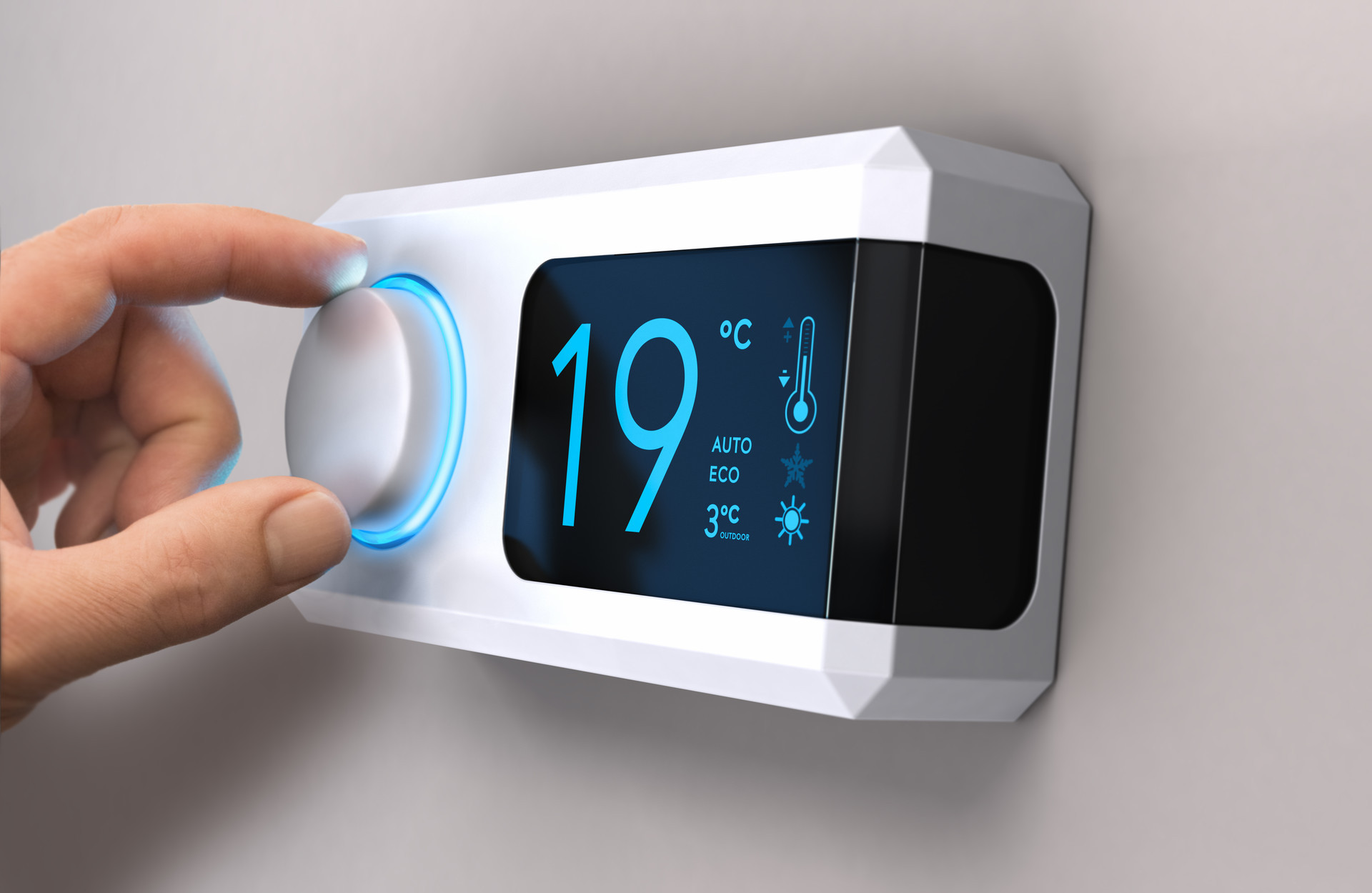
In the freezing winter and boiling summer, we have only one protection—our heating, ventilating, and air conditioning (HVAC) systems. The main access point to this HVAC system is a thermostat, which allows you to control the temperature of your home.
When most people think about optimizing energy efficiency, they think about optimizing their HVAC systems and their ductwork. However, the major cause of their energy problems might be their thermostats. HVAC thermostats come in all sorts of types, with a huge variety of features. Choosing the correct HVAC thermostat could give you unparalleled comfort and control over your home.
Here are the major HVAC thermostats options that you can choose for your home:
Manual Thermostats
Manual thermostats are also known as mechanical or analog thermostats. They are the simplest type of thermostats and are typically found in older houses. Although they are old-school, they often outlast the newer models. Manual thermostats require you set your heating and cooling temperatures manually. So you need to remember to adjust the settings every time you enter or leave your home.
These models may work well for people who are often home and prefer a fixed temperature. However, for many people, it’s difficult to pick the precise temperature for the entire day, and adjusting the thermostat setting repeatedly can be a frustrating prospect. Besides being a little cumbersome to operate, these thermostats aren’t always precise in temperature accuracy. So although these thermostats have a lower initial cost, this inaccuracy in temperature may cause you to use more energy and increase your energy costs.
Programmable Thermostats
Your HVAC system is responsible for over half of your home’s energy costs. In this respect, it might be tempting to buy the model that has a lower upfront cost and sacrifice a little comfort, rather than one with a high upfront cost but that affords higher comfort and energy savings in the long run.
Programmable thermostats make the most efficient use of your HVAC system by adjusting the temperature of your house to your preferred temperatures throughout the day. They work in two major ways:
- By sensing the temperature in the room and tweaking it to reach the right temperature
- By turning the heating/cooling functions on at preset times in the day
You can configure these thermostats to align with the times you are generally at home or away. You can keep the thermostat on away mode during the time you are away from home and program it to start the home mode a little while before you expect to be back, so that you can return to a cozy home. You can set every-day (7 day) schedules, weekday-weekend (5-2 day) schedules or weekday-Saturday-Sunday (5-1-1 day) schedules for your comfort.
Apart from that, you can also adjust temperature settings for times when you are awake or asleep for ultimate comfort. Programmable thermostats have shown a reduction in heating and cooling costs by about 15 percent when used consistently.
One thing to be aware of before buying a programmable thermostat is that not all models are compatible with all HVAC systems. Always consult an HVAC technician, such as the experts at Entek, to make sure you’re getting the right programmable thermostat for you.
Smart Thermostats
While programmable thermostats act as a type of home automation, these devices are not “smart.” For a programmable thermostat to work, you have to manually input your preferred temperature schedules. It doesn’t automatically learn and adapt to your preferences.
Smart thermostats take temperature efficiency to the next level. They can be controlled from your smartphone, provide energy reports and run times, and notify you if your air filter needs replacing. Built with the busy, high-tech consumer in mind, smart thermostats are increasingly becoming part of the larger smart home landscape.
They not only give you unparalleled temperature control, but they also run on Wi-Fi, and many models support Alexa and Google Home functionalities. This enables you to control your home’s comfort level from anywhere with simple voice commands.
There are two major types of smart thermostats:
Algorithm-Based
These thermostats rely on algorithm-based learning. You can input the basic parameters of your schedule, similar to a traditional programmable model. Over time, they’ll learn your schedule and adapt automatically to your changing patterns. For example, it uses motion and light sensors to check whether you are home or away. So if you don’t pass these conveniently located sensors for a long while, it will assume that you’re away and turn to the away setting even if you have programmed it to stay on during that time.
Geofencing-Based
These thermostats rely on your phone’s geofencing feature to check whether you are home or away. You can set the range to anywhere from 500 feet to 7 miles away from your home. So whenever you go outside your preset range, your thermostat should automatically set to away mode. And when you cross back inside this range, it’s supposed to return to the home mode so it’s nice and cozy when you arrive.
Smart thermostats are more than just bells and whistles. They can potentially save a lot of money for you, especially if you have a variable schedule. In cases where you get home late from work, you can adjust your thermostat to stay at away mode for the additional hours through your smartphone. If this happens even twice a week, your cost savings will add up.
Your HVAC system plays a huge role in your connected home. It keeps you cozy and comfortable, but there is a balance between comfort and savings. While traditional thermostats can do the job adequately, smart thermostats give you even more control over your environment. Programmable thermostats are a good comprise between the two extremes and work perfectly if you have a consistent schedule.
It’s all about what makes sense for you and your lifestyle. Compare the options out there to your needs and schedule and then decide which type of thermostat works best for you.


